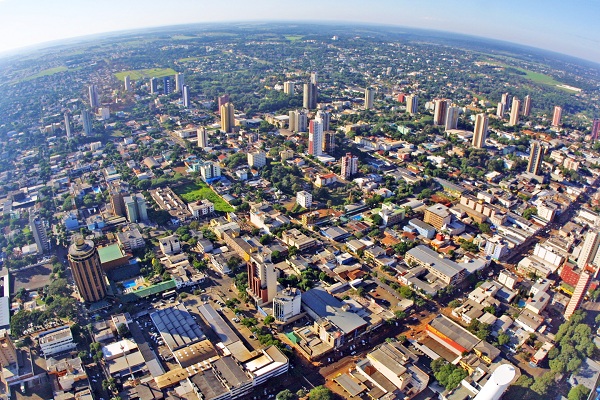

Iguazu is located in the western part of the southern Brazilian state of Parana, at the confluence of the Parana River and Iguazu River.
The city has an annual average temperature of 27.7 degree Celsius. The annual rainfall is 1,712 millimeters, with an annual average humidity of 80 percent. Iguazu covers an area of 630 square kilometers. Of that, Iguazu National Park accounts for 20 percent of the land, and Lake Itaipu accounts for 30 percent. Its urban area spans 85 square kilometers.
The city has a population of about 260,000, including immigrants from more than 80 countries, resulting in its remarkable cultural diversity.
Iguazu is not only the economic center of the western Parana state, but also the second largest tourism center in Brazil. It receives about seven million tourists annually.
Its local residents are mainly engaged in the commerce and tourism industries. The famous Iguazu Falls is 28 kilometers away from the city's urban area, while Itaipu hydroelectric plant, the second largest of its kind in the world, is 12 km away.
Iguazu Falls is actually composed of 275 waterfalls, which extend nearly 5 km in width and flow into the Iguazu River. Three-quarters of the Iguazu Falls are located in Argentina and can also be viewed from Brazil. There are also many national tropical rainforest parks nearby.
The Itaipu hydroelectric plant was jointly built by Brazil and Paraguay. The power generation units and produced power were divided equally between the two countries. The plant has a total installed capacity of 14 million kilowatts, which meets 19.3 percent of Brazil's electricity demands. Its spectacular facilities attract a large number of tourists every year.
There are more than 3,000 Chinese people in Iguazu, most of whom are doing business in Ciudad del Este, Paraguay, as Iguazu is located only 6.5 km away from Paraguay's shopping center Ciudad del Este. About six million Brazilian residents visit Ciudad del Este for shopping every year.

